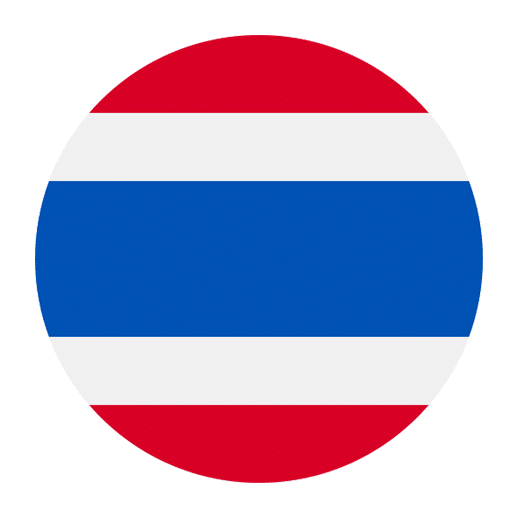Thailand, with its rich cultural heritage and vibrant street food scene, offers an array of tantalizing beverages that are as diverse as the country itself. If you are a language learner aiming to deepen your understanding of Thai culture, learning vocabulary related to different types of beverages can be both fun and practical. This article will guide you through the essential Thai vocabulary for various kinds of drinks, from traditional teas to modern concoctions.
Traditional Thai Beverages
Thailand has a plethora of traditional beverages that are enjoyed by locals and tourists alike. These drinks often feature unique ingredients and flavors that are deeply rooted in Thai culture.
ชาไทย (Cha Thai) – Thai Tea
One of the most iconic Thai beverages is ชาไทย (cha Thai), known in English as Thai tea. This sweet, creamy drink is made from strongly brewed black tea, spiced with star anise, and mixed with sweetened condensed milk. It’s usually served over ice, making it a popular choice for cooling down in Thailand’s tropical climate.
น้ำมะพร้าว (Nam Maprao) – Coconut Water
Another traditional favorite is น้ำมะพร้าว (nam maprao), or coconut water. Fresh coconut water is often sold directly from young coconuts by street vendors. It’s a refreshing and hydrating beverage, perfect for a hot day.
น้ำอ้อย (Nam Oi) – Sugarcane Juice
น้ำอ้อย (nam oi), or sugarcane juice, is a naturally sweet drink that is extracted from pressed sugarcane stalks. It’s often sold by street vendors who will press the sugarcane fresh upon ordering.
น้ำขิง (Nam Khing) – Ginger Tea
น้ำขิง (nam khing) is ginger tea, a spicy and aromatic beverage often consumed for its health benefits. It can be enjoyed hot or iced and is sometimes sweetened with honey or sugar.
Modern Thai Beverages
In addition to traditional drinks, Thailand has embraced a variety of modern beverages that cater to contemporary tastes and global influences.
กาแฟเย็น (Kafae Yen) – Iced Coffee
กาแฟเย็น (kafae yen) is the Thai version of iced coffee. This drink is typically made with strong coffee, sweetened condensed milk, and sometimes a bit of evaporated milk. It’s then poured over ice to create a deliciously refreshing drink.
ชาเขียวมัทฉะ (Cha Khiao Matcha) – Matcha Green Tea
ชาเขียวมัทฉะ (cha khiao matcha) is a popular modern beverage that has made its way from Japan to Thailand. Matcha green tea is finely ground powder from specially grown green tea leaves, and it’s known for its vibrant green color and rich taste. It’s commonly served as a latte or iced drink.
น้ำผลไม้ปั่น (Nam Phonlamai Pan) – Fruit Smoothie
น้ำผลไม้ปั่น (nam phonlamai pan) translates to fruit smoothie. Thailand’s tropical fruits like mango, pineapple, and dragon fruit make for delicious and refreshing smoothies. These are often blended with ice and sometimes yogurt or milk.
ชานมไข่มุก (Cha Nom Khai Mook) – Bubble Tea
ชานมไข่มุก (cha nom khai mook) is bubble tea, a Taiwanese drink that has gained immense popularity in Thailand. It consists of tea, milk, and chewy tapioca pearls, and it can be served hot or cold.
Alcoholic Beverages
Thailand also offers a variety of alcoholic beverages that reflect its unique culture and climate. While not as extensive as the non-alcoholic options, these drinks are an important part of social gatherings and celebrations.
เบียร์ (Bia) – Beer
เบียร์ (bia) is the Thai word for beer. Popular local brands include Singha, Chang, and Leo. Thai beer is typically light and refreshing, ideal for the hot weather.
เหล้าขาว (Lao Khao) – White Spirit
เหล้าขาว (lao khao) is a traditional Thai spirit made from rice. It’s clear and potent, often consumed in small shots. Lao khao is a staple in rural areas and is sometimes referred to as Thai moonshine.
เหล้าอุ (Lao U) – Herbal Spirit
เหล้าอุ (lao u) is another type of traditional Thai alcohol, but it’s infused with various herbs and sometimes fruits. This gives it a unique flavor that varies depending on the ingredients used.
Specialty Beverages
Beyond the common traditional and modern drinks, there are specialty beverages that are often tied to specific regions or occasions.
น้ำกระเจี๊ยบ (Nam Krachiap) – Roselle Juice
น้ำกระเจี๊ยบ (nam krachiap) is made from the roselle plant, a type of hibiscus. This drink has a tart, cranberry-like flavor and is usually sweetened with sugar. It’s often enjoyed as a refreshing cold beverage.
น้ำตาลสด (Nam Tan Sod) – Palm Sugar Juice
น้ำตาลสด (nam tan sod) is juice made from the sap of palm trees. It’s sweet and slightly tangy, and it’s often sold fresh at markets and by street vendors.
น้ำมะตูม (Nam Matoom) – Bael Fruit Tea
น้ำมะตูม (nam matoom) is a tea made from the bael fruit. This drink is believed to have medicinal properties and is often enjoyed both hot and cold. It has a unique, slightly sweet, and aromatic flavor.
ไวน์สับปะรด (Wain Sapparod) – Pineapple Wine
ไวน์สับปะรด (wain sapparod) is a unique Thai wine made from fermented pineapples. It has a sweet and fruity flavor, making it a popular choice for those who prefer lighter alcoholic beverages.
Ordering Beverages in Thai
Knowing how to order beverages in Thai can greatly enhance your experience while in Thailand. Here are some useful phrases to help you:
– **Can I have** (ขอ) ขอ (kho) followed by the name of the beverage.
– For example: ขอชาไทย (Kho cha Thai) – Can I have a Thai tea?
– **Without ice** (ไม่ใส่น้ำแข็ง) ไม่ใส่น้ำแข็ง (mai sai nam khaeng).
– For example: ขอชาไทยไม่ใส่น้ำแข็ง (Kho cha Thai mai sai nam khaeng) – Can I have a Thai tea without ice?
– **With ice** (ใส่น้ำแข็ง) ใส่น้ำแข็ง (sai nam khaeng).
– For example: ขอชาไทยใส่น้ำแข็ง (Kho cha Thai sai nam khaeng) – Can I have a Thai tea with ice?
– **Hot** (ร้อน) ร้อน (ron).
– For example: ขอชาร้อน (Kho cha ron) – Can I have a hot tea?
– **Cold** (เย็น) เย็น (yen).
– For example: ขอชาเย็น (Kho cha yen) – Can I have an iced tea?
Conclusion
Learning Thai vocabulary for different types of beverages not only enhances your language skills but also enriches your cultural experience. Whether you are sipping on a traditional Thai tea or enjoying a modern matcha latte, knowing these terms will make your interactions more meaningful and enjoyable. So, the next time you find yourself in Thailand, don’t hesitate to explore the diverse world of Thai beverages and practice your new vocabulary. Cheers! Or as they say in Thai, ชื่นใจ (chuen jai)!

